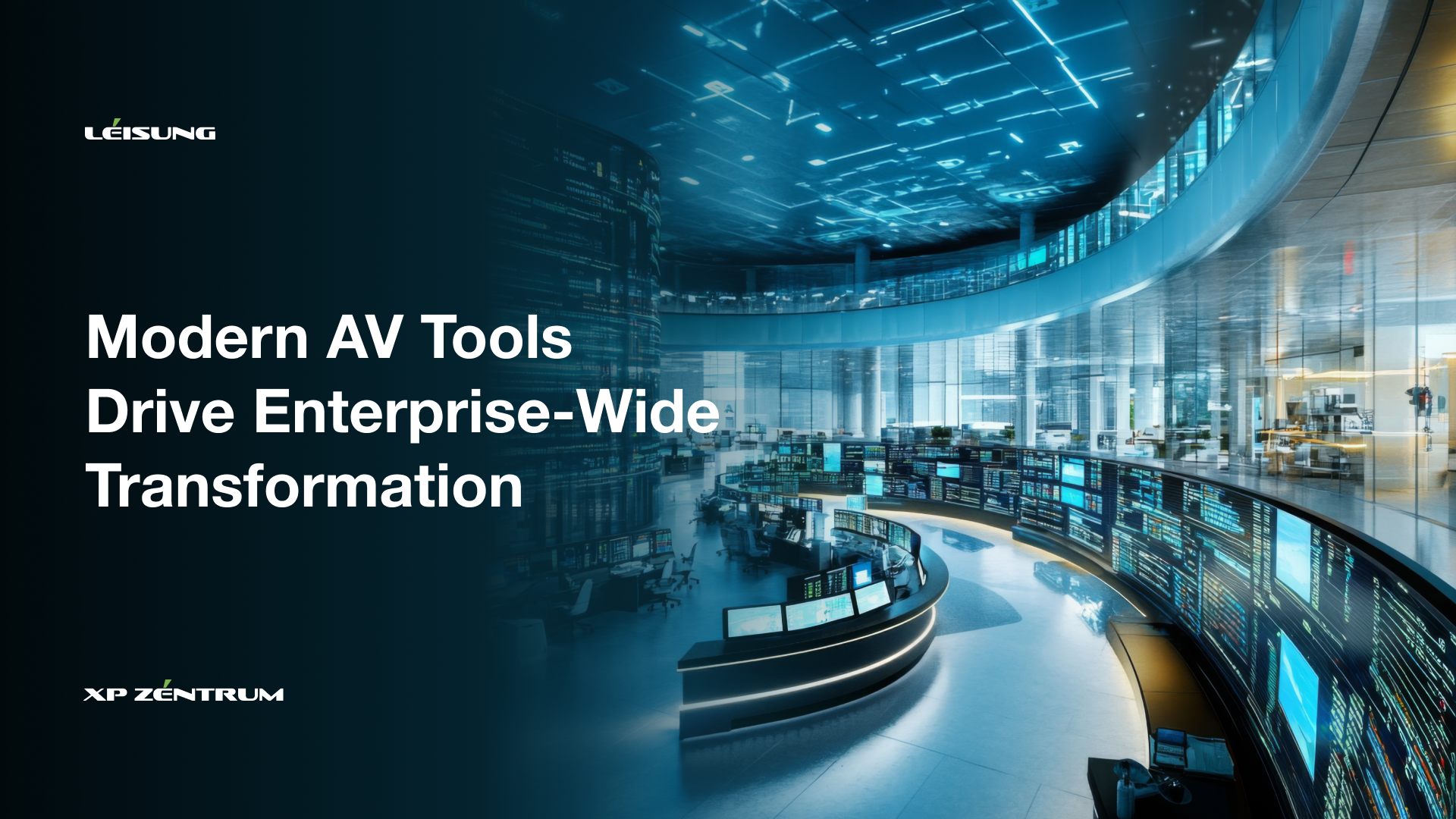8 Examples of How Modern AV Tools Create Enterprise-Wide Impact

In the fast-evolving landscape of business technology, audio-visual (AV) tools have emerged as critical enablers of collaboration, efficiency, and innovation. Modern AV solutions are not just about delivering high-quality sound and visuals; they integrate seamlessly with enterprise workflows, boost productivity, and foster engagement across all levels of an organization. Here’s a closer look at how these tools create enterprise-wide impact, along with examples of their transformative potential.
1. Enhancing Communication Across Locations
In a globalized world, enterprises often operate across multiple time zones and locations. Modern AV tools like video conferencing systems, digital whiteboards, and virtual reality (VR) collaboration platforms make it possible to connect remote teams effortlessly.
Example:
A multinational corporation implemented an AV solution integrating 4K video conferencing and real-time document sharing. This allowed teams in New York, London, and Tokyo to collaborate on product designs, reducing project timelines by 30%.
2. Boosting Employee Engagement
AV tools such as interactive displays, immersive training programs, and gamification techniques ensure employees stay engaged during training and meetings. Engaged employees are more productive and contribute to better business outcomes.
Example:
A retail chain adopted immersive VR-based training modules to onboard new hires. By simulating real-world scenarios, they improved training retention rates by 45%, preparing employees faster and more effectively for customer-facing roles.
3. Driving Data-Driven Decision-Making
Advanced AV tools integrated with analytics provide real-time data visualization, helping leaders make informed decisions. Digital dashboards and interactive displays enable teams to collaborate on insights and strategies.
Example:
An automotive manufacturer leveraged AV-enabled data visualization tools in their war rooms. Interactive dashboards showcased production metrics and supply chain data, enabling the company to identify bottlenecks and reduce downtime by 20%.
4. Creating Dynamic Customer Experiences
Customer-facing AV technologies, such as video walls, interactive kiosks, and virtual showrooms, enhance brand experiences. These tools allow businesses to tell their story in more engaging and memorable ways.
Example:
A luxury fashion retailer implemented interactive kiosks in its flagship stores, offering customers the ability to virtually try on clothes and customize products. This not only increased customer satisfaction but also boosted in-store purchases by 25%.
5. Improving Hybrid Work Environments
With hybrid work becoming the norm, AV tools such as wireless presentation systems and advanced conferencing platforms ensure seamless collaboration between in-office and remote employees.
Example:
A tech company equipped their meeting rooms with wireless presentation tools and AI-enhanced video conferencing software. This allowed remote employees to participate in brainstorming sessions effectively, increasing overall team productivity by 40%.
6. Supporting Corporate Events and Marketing
Corporate events, webinars, and product launches benefit from cutting-edge AV tools like live streaming platforms, augmented reality (AR), and projection mapping. These technologies create immersive and impactful experiences for attendees.
Example:
A software company used AR and projection mapping during a product launch event to demonstrate their software’s capabilities. This innovative approach captivated the audience and generated 300% more post-event inquiries compared to traditional methods.
7. Enhancing Accessibility and Inclusivity
Modern AV tools ensure that enterprises cater to diverse employee and customer needs by incorporating accessibility features like closed captions, sign language interpretation, and assistive listening devices.
Example:
A financial services firm integrated real-time closed captioning and language translation into its town hall meetings, ensuring all employees—regardless of location or language—could participate effectively. Employee satisfaction scores rose by 15% as a result.
8. Streamlining Facility Management
Smart AV systems, including automated lighting, climate control, and energy-saving features, are increasingly integrated into enterprise buildings, enhancing efficiency and sustainability.
Example:
A global energy company adopted an AV-integrated building management system that automated lighting and HVAC based on occupancy. This reduced energy consumption by 25%, aligning with the company’s sustainability goals.
Conclusion
The impact of modern AV tools extends far beyond their technical capabilities. By fostering collaboration, improving engagement, and driving innovation, these technologies enable enterprises to thrive in competitive markets. Whether through immersive training modules, dynamic customer experiences, or energy-efficient solutions, AV tools are reshaping the way organizations operate and succeed.
Enterprises that embrace modern AV solutions will not only improve internal workflows but also create memorable experiences for their customers and stakeholders—achieving a true enterprise-wide impact.
Looking to integrate AV tools into your enterprise? Let us help you unlock your full potential!





Please sign in or register for FREE
If you are a registered user on AVIXA Xchange, please sign in
Thank you!